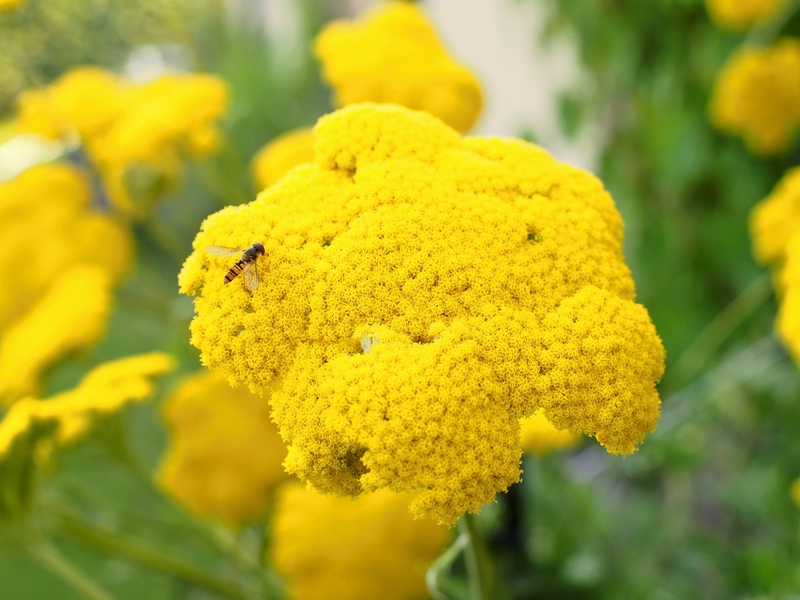Designing the Ultimate Child-Friendly Garden
Posted on 22/08/2025
Designing the Ultimate Child-Friendly Garden
Creating a garden that's both enchanting and safe for children is a dream for many families. In this comprehensive guide, we'll explore effective strategies, practical ideas, and inspiring design tips to help you craft the ultimate child-friendly garden. Whether you have a sprawling backyard or a petite city plot, this article will equip you with everything you need to turn your outdoor space into a safe, stimulating, and joyful haven for young explorers.
Why Design a Child-Friendly Garden?
From encouraging active play and creativity to fostering an early appreciation for nature, a kid-friendly garden offers endless benefits. Not only does it help children develop motor skills and social connections, but it also promotes relaxation and mindfulness for the whole family.
- Physical activity: Running, climbing, and digging help develop strength and coordination.
- Cognitive development: Exploring plants, insects, and natural features stimulates curiosity and learning.
- Family bonding: Gardening together encourages teamwork and shared memories.
- Healthy lifestyle: Growing fruits and vegetables introduces kids to healthy food choices.

Key Principles of Crafting a Safe and Playful Garden
When designing the ultimate children's garden, prioritize both safety and imagination. Here are essential principles to keep in mind:
- Safety First: Select non-toxic plants, use child-friendly materials, and eliminate hazards like sharp edges or deep water.
- Stimulate All Senses: Incorporate a mix of colors, textures, scents, and sounds to engage children's senses.
- Encourage Free Play: Design open areas for movement, play structures for climbing, and secret spaces for imaginative play.
- Accessible for All Ages: Ensure paths and activities are suitable for different age groups and abilities.
- Nature-First Approach: Integrate wildlife-friendly features and sustainable practices to teach kids environmental stewardship.
Start with Smart Garden Planning
1. Observe Your Space
Before you begin, spend time observing how sunlight, wind, and shade change throughout the day in your yard. Make note of:
- Sunny and shaded locations
- Existing plants and trees
- Potential hazards (uneven ground, water features, sharp-edged objects)
- Views you want to keep or screen off
2. Involve Kids in the Planning Stage
Encourage children to participate in the design process. Ask for their input:
- Which colors and flowers do they like?
- What games do they enjoy most?
- Would they like spaces to dig, build, or hide?
Essential Features of a Family-Friendly Garden
Secure and Inviting Boundaries
Safety comes first in every garden design for children. Ensure your garden is securely enclosed. Use fencing, living hedges, or trellis with climbing plants to provide privacy and prevent children from wandering out. Inspect boundaries regularly for gaps or hazards.
Soft Surfacing & Safe Pathways
Falls will happen, so choose soft, shock-absorbing surfaces wherever kids might play. Bark chips, rubber mulch, grass, and sand are ideal for under play equipment. Create winding paths using smooth stepping stones, pavers, or gravel for sensory exploration and easy navigation.
Play Zones & Activity Areas
Designate distinct spaces for different types of play:
- Active Play: Swings, slides, or climbing frames offer physical challenges.
- Creative Play: Sandpits and mud kitchens let kids experiment and build.
- Quiet Retreats: Secret dens, willow wigwams, teepees, or hammocks provide cozy corners for reading and quiet moments.
- Exploration Zones: Nature trails, stepping logs, and bug hotels foster discovery and connection with the natural world.
Edible and Sensory Gardens
A child-centered garden design isn't complete without plants that can be touched, smelled, and tasted. Consider:
- Herb spirals with mint, basil, and chives
- Strawberry patches or berry bushes
- Sunflowers and marigolds for bold color and height
- Lamb's ear, grasses, and soft leaves for tactile stimulation
- Lavender or scented geraniums for fragrant aromas
Selecting Child-Safe Plants
When it comes to safe plants for children's gardens, choose varieties that are non-toxic, robust, and low maintenance. Avoid anything with spines, thorns, berries, or sap that could be dangerous if ingested or touched.
Best Plants for Kids' Gardens
- Nasturtiums: Edible flowers, quick to grow
- Marigolds and Cosmos: Colorful, easy to care for
- Snapdragons and Sunflowers: Add height and whimsy
- Chives and Mint: Scented, edible, hardy
- Sensory Grasses: Soft to the touch, rustle in the wind
For a comprehensive list of non-toxic garden plants for children, consult your local gardening center or trusted online resources.
Garden Structures for Play and Learning
Playhouses, Treehouses, and Dens
A well-placed playhouse or treehouse is the ultimate garden hideaway. Opt for sturdy construction, smooth surfaces, and child-safe finishes. Willow tunnels, bamboo teepees, or upcycled pallets can all be transformed into magical secret spaces for pretend play.
Sandpits and Mud Kitchens
A sandpit encourages digging, building, and sensory play. Use untreated timber edging, shade it with a canopy, and cover when not in use to keep animals out.
A mud kitchen--a simple outdoor kitchen made with old sinks, pots, and pans--fosters imaginative play and tactile exploration.
Natural Play Equipment
Consider eco-friendly alternatives to plastic playsets:
- Balance beams from logs or timber
- Stepping stones or stumps arranged in zig-zag patterns
- Climbing boulders or rope swings for adventurous spirits
- Water play features with shallow basins or gentle pumps
Gardening Activities for Children
Getting Kids Involved
Transform your family garden design by inviting children to become junior gardeners. Age-appropriate tasks keep them interested and teach responsibility. Try activities like:
- Starting seeds indoors or outdoors
- Painting plant pots or outdoor decorations
- Keeping a simple garden journal or observation diary
- Composting kitchen scraps and garden waste
- Building insect hotels or bird feeders
The Importance of Nature and Wildlife
A truly child-friendly outdoor space embraces nature. Create habitats and encourage biodiversity to inspire budding naturalists.
- Plant wildflowers to attract butterflies and bees
- Install log piles or stone stacks for mini-beasts
- Hang bird boxes or feeders to welcome feathered friends
- Add a small, shallow wildlife pond with gradual edges (and always supervise young children near water!)
Safety Tips for the Perfect Child-Friendly Garden
Even in the most magical children's garden design, safety is non-negotiable. Adhere to these critical guidelines:
- Fencing: Ensure all boundaries are secure and gates are child-proofed.
- Toxic Plants: Double-check all plant choices; remove poisonous species.
- Tools & Chemicals: Store tools, fertilizers, and pesticides out of reach in a locked shed.
- Water: Cover garden ponds, or opt for shallow water features with rocks for easy escape routes.
- Supervision: Always supervise young children during outdoor play, especially near water or sharp objects.
- Play Equipment: Regularly inspect and maintain all structures for stability and safety.
Designing for All Weather: Shade, Shelter & Year-Round Play
A well-designed child-friendly backyard supports play in every season. Incorporate shade trees, pergolas, or sailcloths for hot days, and dens or shelters for drizzly afternoons. Hard surfaces like patios or decking provide year-round play space, while waterproof mats and all-weather cushions bring comfort regardless of forecast.
Plant for all seasons: Include evergreens, deciduous trees, and a mix of annuals and perennials to ensure interest every month.
Tips for Small Spaces and Urban Gardens
Don't have a huge garden? No problem! A compact area can still be the best garden for kids with thoughtful planning:
- Vertical gardens on walls or fences with trailing strawberries and herbs
- Multi-functional furniture (storage benches for toys and tools)
- Container planting for easy access and rearrangement
- Miniature water features or bug hotels
- Hang chalkboards for creative expression without taking up floor space

Maintaining Your Child-Friendly Garden
Designing the ultimate child-focused garden is an ongoing project. Involve your whole family in seasonal tasks:
- Prune and clear safety hazards each spring and fall
- Refresh mulch and replace broken surfacing as needed
- Rotate toys and garden activities for renewed interest
- Hold annual cleanups and plant new seeds together
Conclusion: Where Memories Grow
Designing the ultimate child-friendly garden is about more than safety checks and clever layouts--it's about fostering joy, curiosity, and wonder in the natural world. By thoughtfully planning your space, you'll cultivate a sanctuary where children can grow, laugh, and explore in harmony with nature.
Start small, dream big, and let your outdoor space become the heart of family life. Happy gardening!

